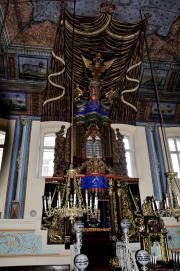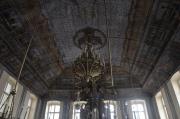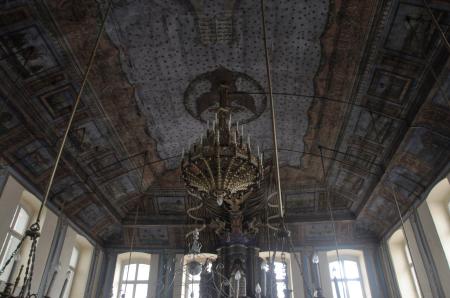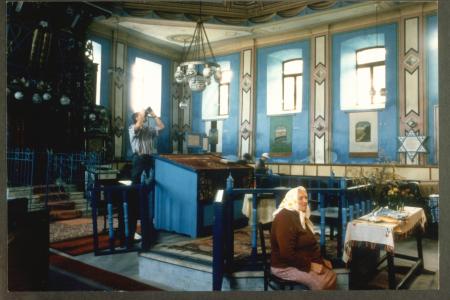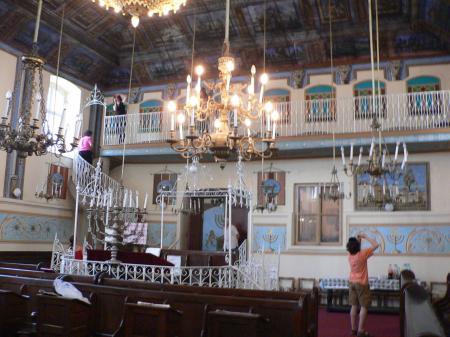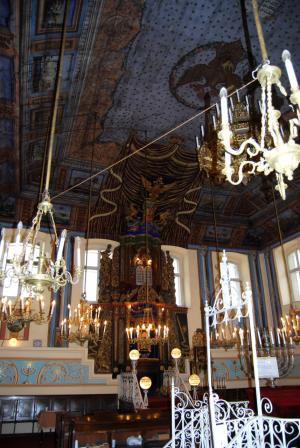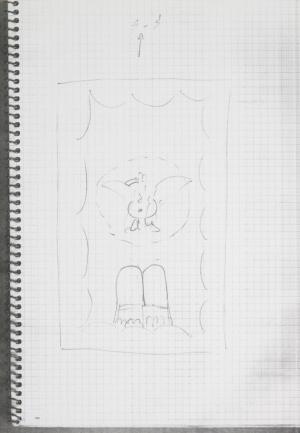Obj. ID: 2203
Jewish Architecture Great Synagogue (Hoykhe Shul) in Botoşani – Main prayer hall
To the main object: Great Synagogue (Hoykhe Shul) in Botoşani, Romania

The decorative program of the main prayer hall is complex, consisting of several elements: ceiling paintings on canvas, a carved wooden Torah ark that extends into the plafond, central wooden chandeliers and accompanying copper chandeliers, wall paintings executed as architectural decoration, and images of the tribes of Israel. The wall and ceiling paintings date from different time periods.
Some of the paintings on the vault may be dated indirectly by observing features derived from a specific model. The urban structures (houses) of cylindrical shape with low domes, accompanied by narrow peaked towers (probably minarets), appear to be patterned on images included in maps of the Holy Land published no earlier than 1882 (according to the study of Rehav Rubin; see below). These vault murals should consequently be dated to the approximate period 1883-1890. For Rubin's study, see:
ריכב (בוני) רובין, צורת הארץ: ארץ ישראל במפה העברית מרש"י ועד ראשית המאה העשרים (ירושלים: יד יצחק בן צבי, 2014)
On the other hand, one may presume that the date of the painted canvas on the ceiling must correspond to the date of the Torah ark with which it blends artistically. According to an accompanying inscription, the Torah ark was created in 1861.
The wall paintings in the main prayer hall appear to have been created ca. 1920.
The condition of the vault paintings is poor. The canvas fabric is torn in many places, and large fragments of the paintings have been damaged by humidity and mold. By contrast, the Torah ark and wall paintings already underwent restoration in 2010.
For the Torah ark decoration see:
For the vault decoration see:
For the wall decoration see:


